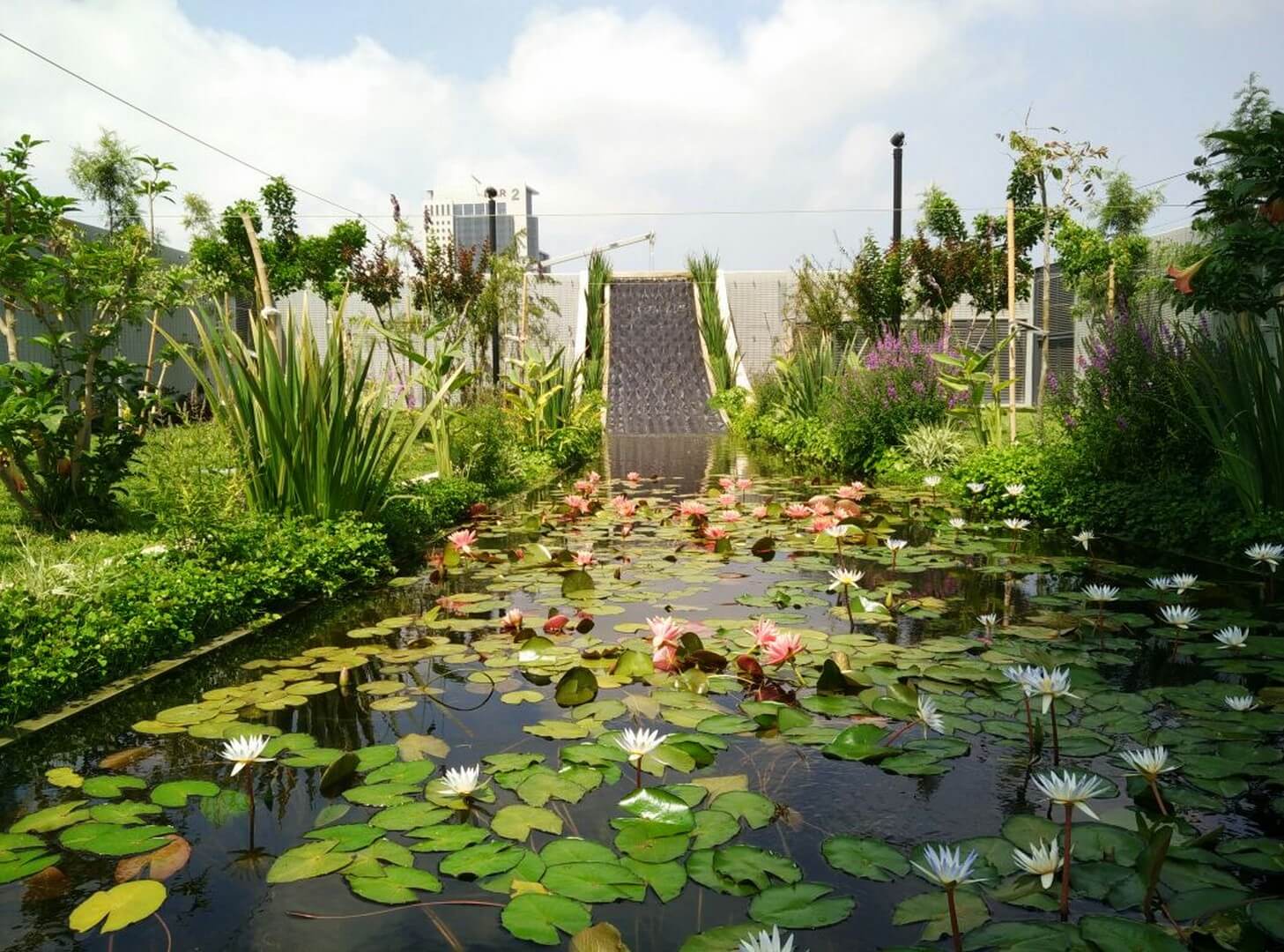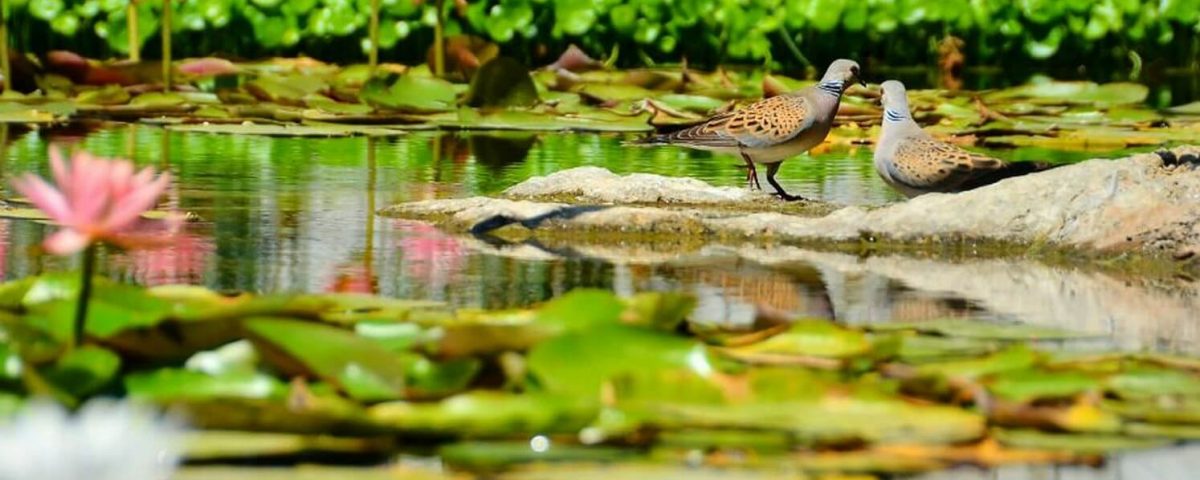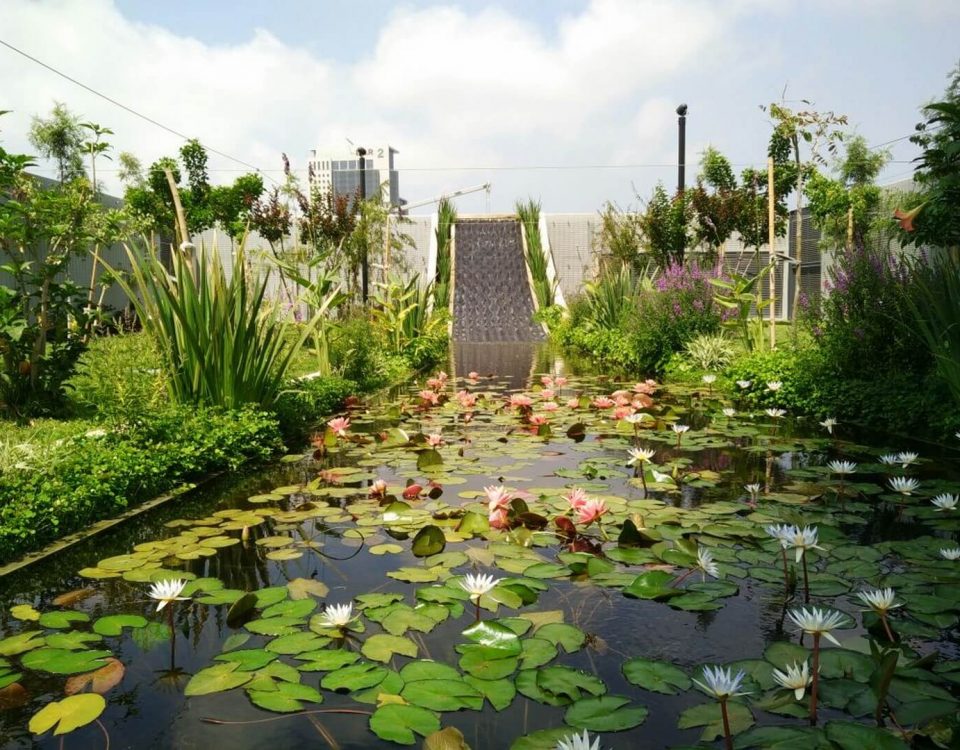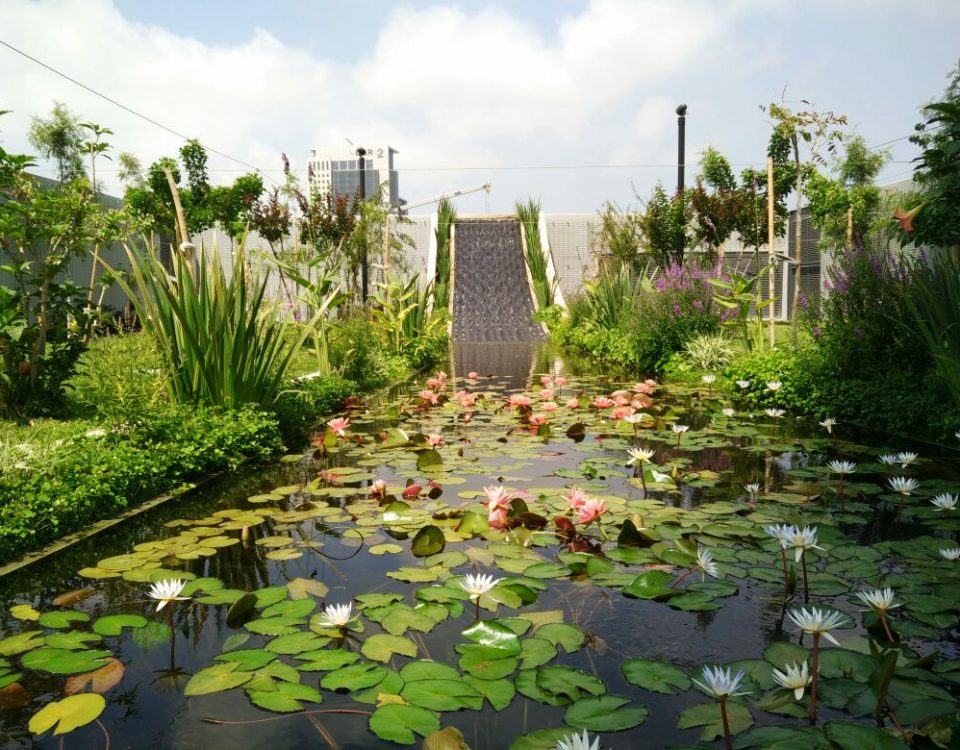
Constructed wetlands at the Seven Mills Site
אוקטובר 24, 2016
Removal of Phosphorous by Constructed Wetlands
אוקטובר 24, 2016Sludge treatment using aquatic plants
The State of Israel, like all developed countries, produces enormous amounts of sludge (111,000 tons of dry matter per year). About half of this amount is discarded into the Mediterranean Sea, polluting it. It is clear to all that this type of solution can not last for a long time, and an alternative solution must be found immediately. Disposal of sludge in landfills causes soil and groundwater contamination. The idea of turning sludge into compost for agricultural use is correct, but lack of treatment and disposal of pollutants (such as metals, phenols, boron, chlorides, etc.) can decrease agricultural productivity and, even worse, will cause long-term damage to agricultural soils and groundwater.
In raw sludge, produced from wastewater by the activated sludge treatment process, about 5% is dry matter and the rest is water. 66.7% of this water is pore water. Removing the pore water leaves the sludge with 15% dry matter. 25% is capillary water. Removal of capillary water leaves the sludge with 50% dry matter. The remaining 8.3% is adsorption water.
Conventional methods of sludge thickening and drying usually remove only the first type of liquids. These methods are energy consuming, and they make use of polymeric materials which lower the sludge quality and its future uses. In addition, these methods do not exclude the hazardous substances (metals, salts, fats, etc.) from the sludge and only increase their concentration.
A major concern in most processes is the decrease in the level of – CST (Capillary suction time), the sludge drying capacity index set by Huisman & Van Kesteren. In other words, the thickening process meant for drying the sludge decrease ability to complete the process. The CST value of untreated sludge is 20-60 seconds, while thickened sludge has a CST value of 100-1000 seconds, depending on the type of treatment it has passed. The amounts of polymers / starch / fat, which are added in the various methods, as well as the treatment temperature, are responsible for the wide variation between different types of sludge.
Treating sludge by PHYTOREMEDIATION, creates a dry sludge with about 60-70% dry matter, and the most efficient removal of harmful substances. The compost produced by this process is approved for agricultural placement even in countries with strict standards. The following table shows a comparison of the quality of compost made by phytoremediation of sludge, to compost standards in northern Europe:
| Standard | Measured Value | Unit | |
| 10,000 | 1,300 | Mg/kg P | Lead |
| 120 | — | Mg/kg dm | Lead |
| 100 | 15 | Mg/kg P | Cadmium |
| 0.8 | — | Mg/kg dm | Cadmium |
| 200 | 26 | Mg/kg P | Mercury |
| 0.8 | — | Mg/kg dm | Mercury |
| 2,500 | 400 | Mg/kg P | Nickel |
| 30 | — | Mg/kg dm | Nickel |
| 100 | 39 | Mg/kg dm | Chromium |
| 10,000 | 260 | Mg/kg dm | Copper |
| 4,000 | 410 | Mg/kg dm | Zinc |
| 3 | 2.9 | Mg/kg dm | PAH |
| 50 | 3.4 | Mg/kg dm | DEHP |
| 10 | 3.1 | Mg/kg dm | NPE |
| 1,300 | 50> | Mg/kg dm | LAS |
As mentioned, the most effective treatment is treating the raw sludge directly, but in the reality of the Western world, various WWTP provide sludge at different qualities and thickness levels, and aqueous plant systems successfully deal with all of them.
In some Scandinavian countries , Sludge treatment by constructed wetlands is very common and is gaining momentum. Scandinavian countries are leaders in this area despite affect that the short growing season and the rainfall affect the systems performance. In Israel, similar systems (with the changes necessary to adapt them to Israeli conditions), is yielding much better results!
In Denmark for example, 155,000 tons dry matter is produced per year. In 2003, despite climate limitations, 30,000 tons of the dry matter was treated by plant systems, with a plan to double this number by the end of 2005. In Sweden the situation is similar. The treated material undergoes severe testing and is applied in agriculture. In Northern Europe, Wastewater treatment is not centralized as in Israel, so most plants do not produce more than – 2,000 tons of dry matter per year. The systems are usually located near the activated sludge plant, and return drain water to the factory. Sometimes sludge is brought to the system from factories nearby, and you can see the system dealing with varying sludge quality.
Method:
Such a sludge treatment facility consists of several sealed pools with substrate, water plants and a drainage system. A pumping system spreads the sludge evenly into the pool area (the pumps and control systems are the only energy consumers in the entire system). Evapotranspiration, oxidation (water plants have the ability to deliver oxygen to the rhizosphere), degradation, mineralization and adsorption stabilize the sludge, dry it out, and remove toxins. The drainage water is returned to the source factory, or are treated in another plant system to the level required for consumers.
The pools are designed to work for 30 years, divided to three periods of 8-12 years. Each period includes an establishment of the system, activity, and the removal of the accumulated compost, and back again.
In Northern Europe the accepted calculation for the required area is a square meter for every 60 tons of dry matter per year. In tropical Asia the calculation is a square meter for every 250 kg. In Israel 130-170 kg dry matter per square meter per year can be reached depending on the region in the country, and characteristics of the sludge. In studies conducted by the "Ofra water plants" on different plants, Evapotranspiration levels were measured, as well as the adsorption capacity of various salts and pollutants by each plant. In the Tzippory farm outstanding plants were cultivated, and it is possible to customize the plant composition in the system to fit different sludge types and any special problems the might pose.
The Shafdan alone produces 58,000 tons per year. Preliminary estimates indicate that the whole amount can be taken care of in an area of about 600 acres, near the plant.
The Shafdan can make use of other PHYTOREMEDIATION methods. Today the polishing process is done by infiltration. The problem of the process is ground obstruction. When the infiltration is done through the water plants and the substrate, this process can be avoided. Moreover, Obstructed areas can be used building un-sealed pools, so most of the treated water will be collected for consumers, and some will infiltrate the ground after having been purified, for the use of other consumers



